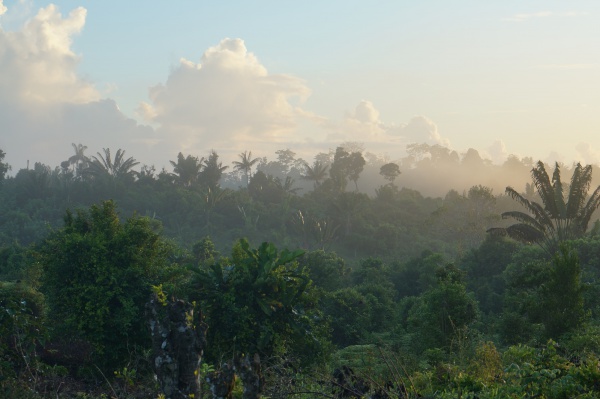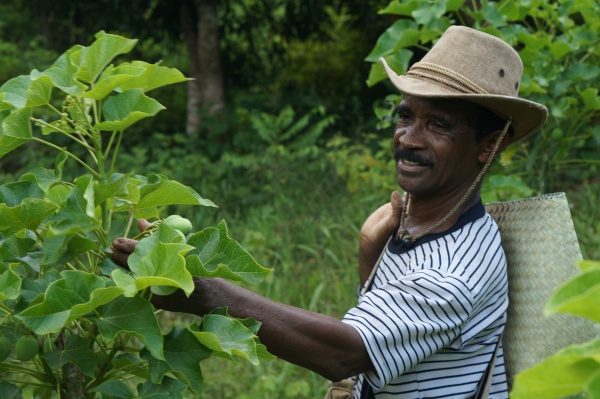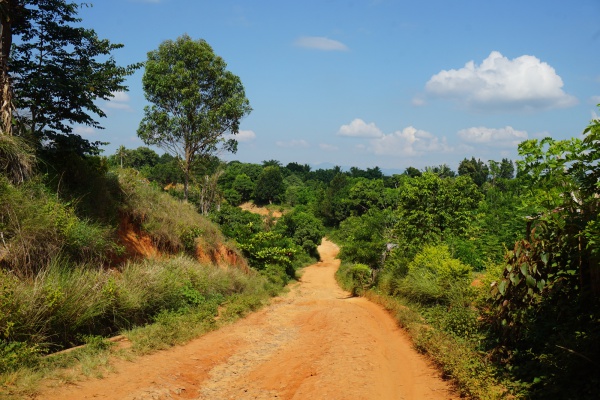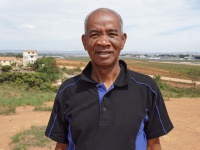Difference between revisions of "Vohitrarivo farmland"
CampMaster (talk | contribs) |
(Tags: Mobile edit, Mobile web edit) |
||
| (20 intermediate revisions by one other user not shown) | |||
| Line 1: | Line 1: | ||
| − | '''Vohitrarivo | + | '''The Vohitrarivo farm is a 40ha land area next to the village of Vohitrarivo in the SAVA region in the northeast of Madagascar. Located in perhaps one of the cleanest regions on earth, the land has been used for small-scale farming without use of artificial fertilisers, pesticides or fossil-fueled farming machinery throughout its existence. With a natural river running through the middle of the property, the land is especially rich in alluvial soil which receives seasonal deposits of fertile sediment providing ideal conditions for farming countless species of low-altitude tropical crops.''' |
| − | + | [[File:Vohitrarivo_300.jpg|600px]] | |
| − | + | The land, which is in its third generation of Malagasy ownership, has only been utilised for farming for two generations and with the exception of small-scale agricultural cultivation for the needs of current land caretakers living in Vohitrarivo and looking after the area, farming has remained largely undeveloped since year 2000, which has left the vegetation grow together pretty much as nature designs. | |
| − | + | {| class="imageTable" | |
| + | |- | ||
| + | |colspan="3" | [[File:Vohitrarivo 038.jpg|600px]] | ||
| + | |- | ||
| + | |[[File:Vohitrarivo 039.jpg|196px]] | ||
| + | |align="center"|[[File:Vohitrarivo 041.jpg|196px]] | ||
| + | |align="right"|[[File:Vohitrarivo 043.jpg|196px]] | ||
| + | |- | ||
| + | |[[File:Vohitrarivo 044.jpg|196px]] | ||
| + | |align="center"|[[File:Vohitrarivo 052.jpg|196px]] | ||
| + | |align="right"|[[File:Vohitrarivo 054.jpg|196px]] | ||
| + | |- | ||
| + | |[[File:Vohitrarivo 057.jpg|196px]] | ||
| + | |align="center"|[[File:Vohitrarivo 059.jpg|196px]] | ||
| + | |align="right"|[[File:Vohitrarivo 060.jpg|196px]] | ||
| + | |- | ||
| + | |[[File:Vohitrarivo 032.jpg|196px]] | ||
| + | |align="center"|[[File:Vohitrarivo 072.jpg|196px]] | ||
| + | |align="right"|[[File:Vohitrarivo 074.jpg|196px]] | ||
| + | |- | ||
| + | |} | ||
| − | + | Crops and plants, some wild, include corn, sugarcane, pineapple, mango, lychee, coconut, banana, pepper, bamboo, breadfruit, vanilla, cassava, coffee, papaya, cocoa, chilli, cinnamon, rice and more. In organic farming terminology of so-called companion-planting, this mixed planting situation provides a natural habitat for flora and fauna without the need of unnatural pesticides as single-crop farming methods typically practise elsewhere in the world. | |
| + | {| class="imageTable" | ||
| + | |- | ||
| + | |colspan="3" | [[File:Vohitrarivo 077.jpg|600px]] | ||
| + | |- | ||
| + | |[[File:Vohitrarivo 092.jpg|196px]] | ||
| + | |align="center"|[[File:Vohitrarivo 171.jpg|196px]] | ||
| + | |align="right"|[[File:Vohitrarivo 100.jpg|196px]] | ||
| + | |- | ||
| + | |[[File:Vohitrarivo 102.jpg|196px]] | ||
| + | |align="center"|[[File:Vohitrarivo 103.jpg|196px]] | ||
| + | |align="right"|[[File:Vohitrarivo 105.jpg|196px]] | ||
| + | |- | ||
| + | |[[File:Vohitrarivo 253.jpg|196px]] | ||
| + | |align="center"|[[File:Vohitrarivo 110.jpg|196px]] | ||
| + | |align="right"|[[File:Vohitrarivo 112.jpg|196px]] | ||
| + | |- | ||
| + | |} | ||
| + | The site is located about 25km from the coast of the Indian Ocean and 18km inland about half-way between [[Antalaha]] and [[Sambava]]. | ||
| + | |||
| + | {| class="imageTable" | ||
| + | |- | ||
| + | |colspan="3" | [[File:Vohitrarivo 258.jpg|600px]] | ||
| + | |- | ||
| + | |[[File:Vohitrarivo 132.jpg|196px]] | ||
| + | |align="center"|[[File:Vohitrarivo 139.jpg|196px]] | ||
| + | |align="right"|[[File:Vohitrarivo 145.jpg|196px]] | ||
| + | |- | ||
| + | |[[File:Vohitrarivo 159.jpg|196px]] | ||
| + | |align="center"|[[File:Vohitrarivo 093.jpg|196px]] | ||
| + | |align="right"|[[File:Vohitrarivo 174.jpg|196px]] | ||
| + | |} | ||
| + | |||
| + | From the crossing at [[Ambodipont Isahana]], a village of about 300 inhabitants, take the road inland, passing [[Tananabaovao]] after 4.6km, a village of about 100 inhabitants. 7.6km after is the village of [[Ambinanifaho]] with about 2,000 inhabitants. 8km further is the village of [[Ambodilalona]] with about 800 inhabitants and 3km thereafter is [[Lanjarivo]] with about 1,000 inhabits and finally 2km from there is [[Vohitrarivo]] with about 500 inhabitants. Vohitrarivo is the nearest village to the land starting at 1km further inland from the village. | ||
| + | |||
| + | {| class="imageTable" | ||
| + | |- | ||
| + | |colspan="3" | [[File:Vohitrarivo 178.jpg|600px]] | ||
| + | |- | ||
| + | |[[File:Vohitrarivo 205.jpg|196px]] | ||
| + | |align="center"|[[File:Vohitrarivo 181.jpg|196px]] | ||
| + | |align="right"|[[File:Vohitrarivo 183.jpg|196px]] | ||
| + | |- | ||
| + | |[[File:Vohitrarivo 185.jpg|196px]] | ||
| + | |align="center"|[[File:Vohitrarivo 186.jpg|196px]] | ||
| + | |align="right"|[[File:Vohitrarivo 221.jpg|196px]] | ||
| + | |- | ||
| + | |[[File:Vohitrarivo 200.jpg|196px]] | ||
| + | |align="center"|[[File:Vohitrarivo 197.jpg|196px]] | ||
| + | |align="right"|[[File:Vohitrarivo 198.jpg|196px]] | ||
| + | |} | ||
| + | |||
| + | <HTML5video type="youtube">IleoqYJdfR0</HTML5video><br> | ||
| + | |||
| + | The river Farariana runs through the land. There are no inhabited villages further upstream between the land area and the source of the river, making the water perfectly safe to drink. Downstream, Farariana joins the Tanambao river and leads into the Indian Ocean. | ||
| + | |||
| + | [[File:Vohitrarivo 108.jpg|600px]] | ||
| + | |||
| + | The land is family-owned by Pierre Ndrevelo (pictured above) who is a lecturer at the University of Antalaha. As he did not continue the family tradition of farming, the land is for sale. He hopes to find a buyer who will manage to property in a sustainable way that can contribute to the local community of Vohitrarivo where he grew up. | ||
<googlemap version="0.9" lat="-14.586837" lon="50.050212" height="750" controls="large" zoom="16" style="width:100%;max-width:600px;"> | <googlemap version="0.9" lat="-14.586837" lon="50.050212" height="750" controls="large" zoom="16" style="width:100%;max-width:600px;"> | ||
-14.592236, 50.049311 | -14.592236, 50.049311 | ||
[[Vohitrarivo]] village | [[Vohitrarivo]] village | ||
| + | |||
| + | -14.603767, 50.055333 | ||
| + | [[Lanjarivo]] | ||
| + | |||
| + | -14.611450, 50.076500 | ||
| + | [[Ambodilalona]] | ||
| + | |||
| + | -14.613950, 50.119767 | ||
| + | [[Ambinanifaho]] | ||
| + | |||
| + | -14.62179, 50.144556 | ||
| + | [[Tananabaovao]] | ||
| + | |||
| + | -14.617717, 50.181233 | ||
| + | [[Ambodipont Isahana]] | ||
| + | |||
2#B2FCFF00 | 2#B2FCFF00 | ||
-14.5885414, 50.0522567 | -14.5885414, 50.0522567 | ||
| Line 191: | Line 285: | ||
</googlemap> | </googlemap> | ||
| + | The above map shows the approximately 4.3km boundary around the 40ha property. The minimum elevation above sea level is 12m and maximum is 51m. The condition of the 18km route to the main road varies from difficult to easy depending on the season and usually takes 30 minutes by car or motorcycle during the dry season. | ||
| + | |||
| + | [[File:Vohitrarivo_001.jpg|600px]] | ||
| + | Harvests can easily be transported during the dry season by car or by zebu cart at any time of the year from the land to the crossing at [[Ambodipont Isahana]] along the main road to Antalaha or Sambava. | ||
| − | + | [[File:Randriasony_001.jpg|200px|left]] For further information and/or to organise a visit and survey of the property, contact Pierre's cousin Mr Randriasony in Antananarivo at +261 (0)32 53 958 51 or via email [mailto:boutdepiste@gmail.com boutdepiste@gmail.com] | |
| − | |||
| − | |||
Revision as of 16:08, 20 January 2020
The Vohitrarivo farm is a 40ha land area next to the village of Vohitrarivo in the SAVA region in the northeast of Madagascar. Located in perhaps one of the cleanest regions on earth, the land has been used for small-scale farming without use of artificial fertilisers, pesticides or fossil-fueled farming machinery throughout its existence. With a natural river running through the middle of the property, the land is especially rich in alluvial soil which receives seasonal deposits of fertile sediment providing ideal conditions for farming countless species of low-altitude tropical crops.
The land, which is in its third generation of Malagasy ownership, has only been utilised for farming for two generations and with the exception of small-scale agricultural cultivation for the needs of current land caretakers living in Vohitrarivo and looking after the area, farming has remained largely undeveloped since year 2000, which has left the vegetation grow together pretty much as nature designs.
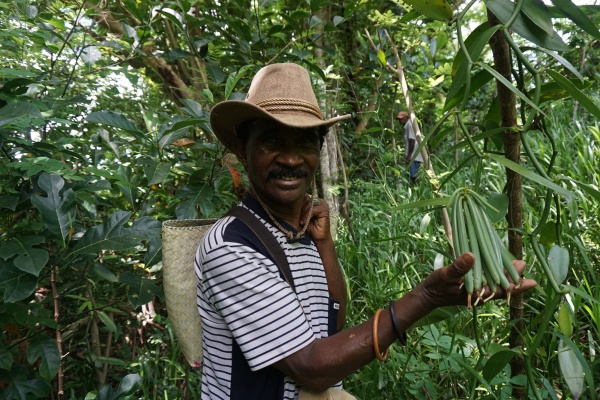
| ||
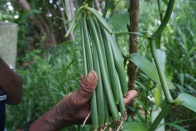
|
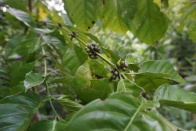
|
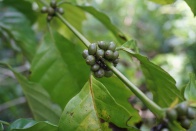
|
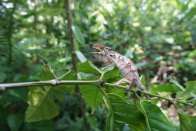
|
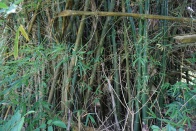
|
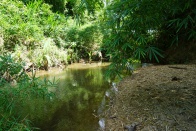
|
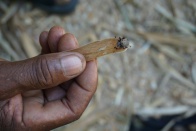
|
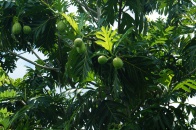
|
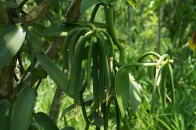
|
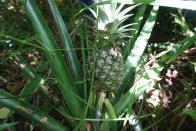
|
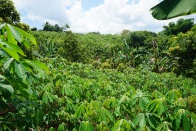
|
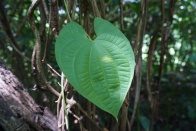
|
Crops and plants, some wild, include corn, sugarcane, pineapple, mango, lychee, coconut, banana, pepper, bamboo, breadfruit, vanilla, cassava, coffee, papaya, cocoa, chilli, cinnamon, rice and more. In organic farming terminology of so-called companion-planting, this mixed planting situation provides a natural habitat for flora and fauna without the need of unnatural pesticides as single-crop farming methods typically practise elsewhere in the world.
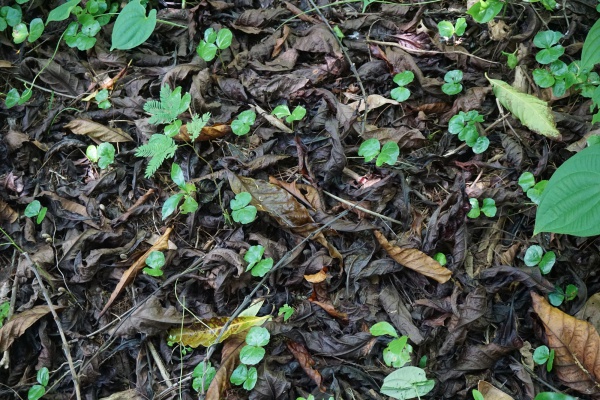
| ||
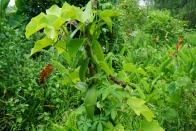
|
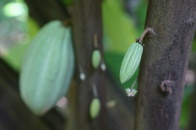
|
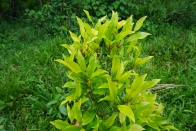
|
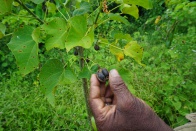
|
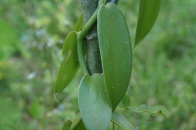
|
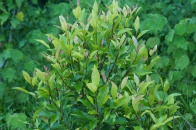
|

|
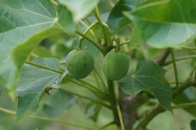
|
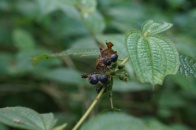
|
The site is located about 25km from the coast of the Indian Ocean and 18km inland about half-way between Antalaha and Sambava.
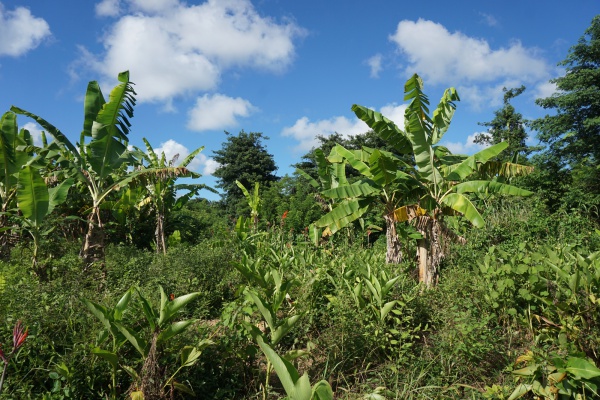
| ||
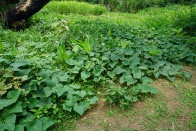
|
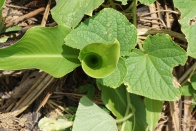
|
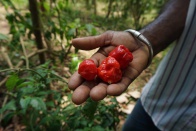
|
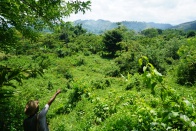
|
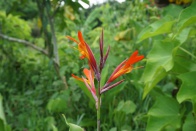
|
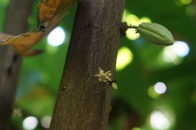
|
From the crossing at Ambodipont Isahana, a village of about 300 inhabitants, take the road inland, passing Tananabaovao after 4.6km, a village of about 100 inhabitants. 7.6km after is the village of Ambinanifaho with about 2,000 inhabitants. 8km further is the village of Ambodilalona with about 800 inhabitants and 3km thereafter is Lanjarivo with about 1,000 inhabits and finally 2km from there is Vohitrarivo with about 500 inhabitants. Vohitrarivo is the nearest village to the land starting at 1km further inland from the village.
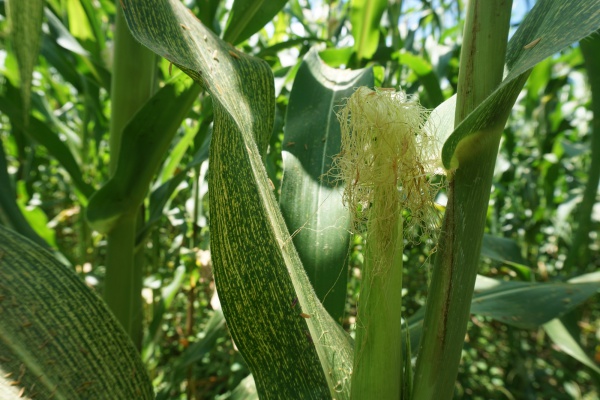
| ||
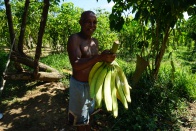
|
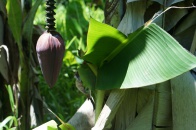
|
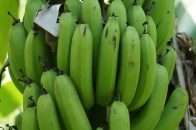
|
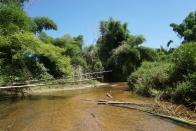
|
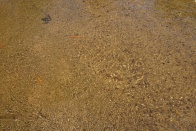
|
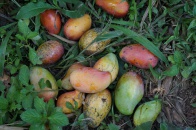
|
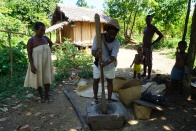
|
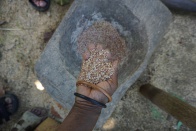
|
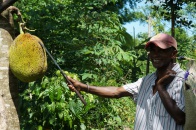
|
The river Farariana runs through the land. There are no inhabited villages further upstream between the land area and the source of the river, making the water perfectly safe to drink. Downstream, Farariana joins the Tanambao river and leads into the Indian Ocean.
The land is family-owned by Pierre Ndrevelo (pictured above) who is a lecturer at the University of Antalaha. As he did not continue the family tradition of farming, the land is for sale. He hopes to find a buyer who will manage to property in a sustainable way that can contribute to the local community of Vohitrarivo where he grew up.
The above map shows the approximately 4.3km boundary around the 40ha property. The minimum elevation above sea level is 12m and maximum is 51m. The condition of the 18km route to the main road varies from difficult to easy depending on the season and usually takes 30 minutes by car or motorcycle during the dry season.
Harvests can easily be transported during the dry season by car or by zebu cart at any time of the year from the land to the crossing at Ambodipont Isahana along the main road to Antalaha or Sambava.
For further information and/or to organise a visit and survey of the property, contact Pierre's cousin Mr Randriasony in Antananarivo at +261 (0)32 53 958 51 or via email boutdepiste@gmail.com